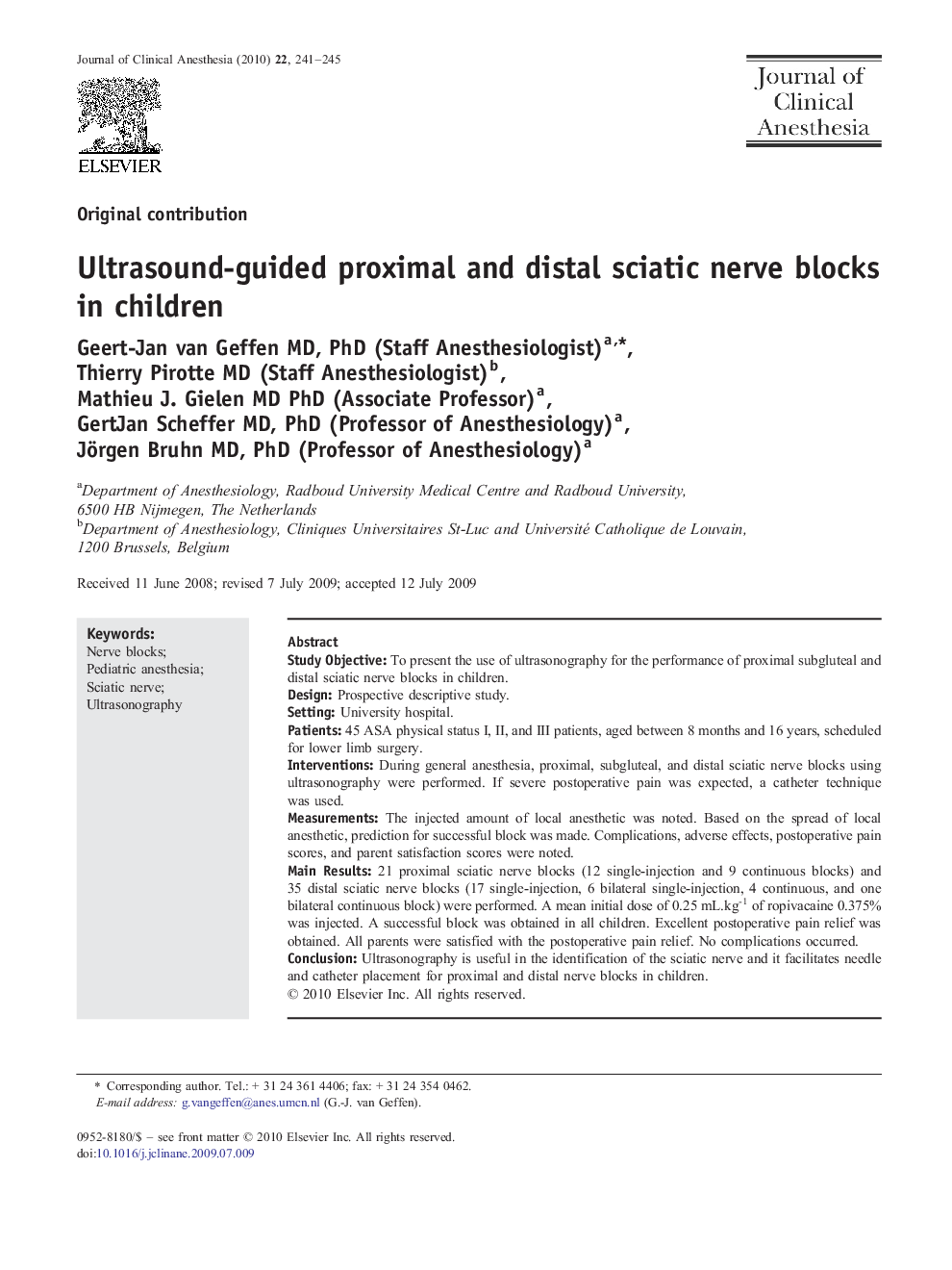| Article ID | Journal | Published Year | Pages | File Type |
|---|---|---|---|---|
| 2763289 | Journal of Clinical Anesthesia | 2010 | 5 Pages |
Study ObjectiveTo present the use of ultrasonography for the performance of proximal subgluteal and distal sciatic nerve blocks in children.DesignProspective descriptive study.SettingUniversity hospital.Patients45 ASA physical status I, II, and III patients, aged between 8 months and 16 years, scheduled for lower limb surgery.InterventionsDuring general anesthesia, proximal, subgluteal, and distal sciatic nerve blocks using ultrasonography were performed. If severe postoperative pain was expected, a catheter technique was used.MeasurementsThe injected amount of local anesthetic was noted. Based on the spread of local anesthetic, prediction for successful block was made. Complications, adverse effects, postoperative pain scores, and parent satisfaction scores were noted.Main Results21 proximal sciatic nerve blocks (12 single-injection and 9 continuous blocks) and 35 distal sciatic nerve blocks (17 single-injection, 6 bilateral single-injection, 4 continuous, and one bilateral continuous block) were performed. A mean initial dose of 0.25 mL.kg-1 of ropivacaine 0.375% was injected. A successful block was obtained in all children. Excellent postoperative pain relief was obtained. All parents were satisfied with the postoperative pain relief. No complications occurred.ConclusionUltrasonography is useful in the identification of the sciatic nerve and it facilitates needle and catheter placement for proximal and distal nerve blocks in children.
